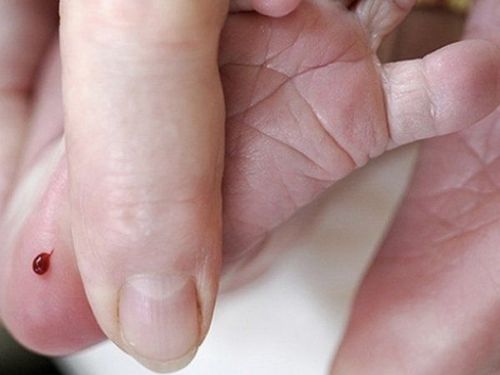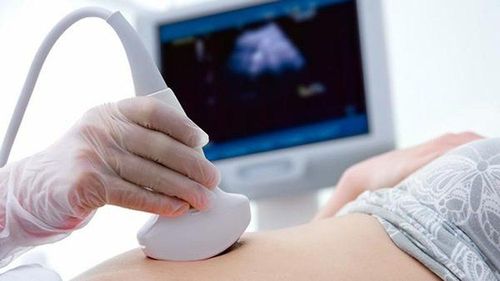This is an automatically translated article.
The article was professionally consulted with Specialist Doctor II Cao Thi Thanh - Pediatrician - Department of Pediatrics - Neonatology - Vinmec Hai Phong International General Hospital.1. What is Galactose Metabolism in Newborns?
Galactose metabolism disorder is a rare disease, about 1 / 50,000 newborns have this disease. The disease is related to chromosomal disorders, inherited in an autosomal recessive gene. Galactose in milk (breast milk, formula milk) when entering the child's body is disturbed, so it cannot convert into Glucose to provide energy for the child. This causes the baby's blood galactose to increase gradually over time until symptoms appear in the organs.2. Mechanism of galactose metabolism disorder
Galactose will convert to glucose through the following stages:Stage 1: Attach phosphate to galactose, convert galactose to galactose-1-phosphate by the enzyme galactokinase (GALK). Stage 2: Galactose-1-phosphate combines with uridyl diphosphoglucose (UDPG) to form Glucose-1-phosphate and UDP-Galactose, catalyzed by the enzyme galactose-1-phosphate uridyl transferase (GALT) Stage 3: UDP- Galactose is converted to UDP-glucose catalyzed by the enzyme UDP-galactose-4-epimerase (GALE). The agents act at any stage to cause the corresponding disease. There are 3 types of disease associated with deficiency of 3 enzymes of each stage.
Type I: GALT enzyme deficiency also known as classical galactosemia Type II: GALK enzyme deficiency Type III: GALE enzyme deficiency

3. Manifestations of Galactose Metabolism Disorders
Depending on the classification, the manifestations of galactose metabolism disorders vary.Classical galactosemia (Type I):
Early manifestations of the disease in the first few weeks after birth; Poor suckling or aborting; Diarrhea, vomiting; Decreased muscle tone; Coma ; Clinical examination may show jaundice, subcutaneous hemorrhage, hepatomegaly, bulging fontanelle, cataracts. Galactosemia type II:
Milder presentation than classical; There may be symptoms of cataracts. Galactosemia type III:
Cataracts; Slow physical and intellectual development; Decreased liver and kidney function.
4. Galactosemia Screening Test
The Galactosemia screening test is one of the tests that are part of the newborn screening program performed in the first days of life.How to do: Take blood from the baby's heel within 24 - 72 hours after birth. The amount of blood taken 1-2 drops should not affect the health of the child.
Screening for galactosemia includes the following tests:
Measurement of blood galactose levels (galactose and galactose-1-phosphate) Measurement of GALT enzyme activity in a blotting blood sample If Galactose levels are elevated and/or GALT enzyme activity lower than normal, then do more specialized tests to make the diagnosis. Screening and early detection help children receive treatment from the first days after birth. Timely detection can limit complications by giving children a reasonable diet, such as limiting all foods containing lactose and galactose.
Also testing for Galactosemia with venous blood or urine, however, is not common clinically.
The factor affecting the Galactosemia test is that the child receives a blood transfusion after birth due to a pathology.

5. Treatment of Galactosemia
If clinical and paraclinical diagnoses confirm that the child has Galactosemia, it is necessary to immediately contact a nutritionist to establish a reasonable diet for the child. Currently, there is no drug to treat galactosemia.Foods that should not be given to children include:
Milk and products containing lactose or galactose (including breast milk); All types of snacks, energy drinks, functional foods containing lactose; You must carefully review the ingredients of the product to be able to choose the most suitable for your child. Foods to use:
Formula milk is extracted from soy to reduce the concentration of galactose in the blood of the baby; Give your baby lactose-free formula; Calcium supplements for children.
6. Prophylaxis of Galactosemia
To prevent galactose metabolism disorders in children, mothers need to be counseled before and after birth.Prenatal counseling:
Prenatal genetic counseling and testing is possible if you know that there are people in your family who have had galactosemia before. You will be consulted about the risks and probabilities of the disease so that you can learn more information, advice and have the most reasonable child care regimen. Postpartum counseling:
If the child has symptoms of the disease such as nausea, vomiting, crying, it is necessary to immediately stop all types of milk the baby is using and take the child to a medical facility immediately, bring a milk sample to the doctor. examination and consultation; Take your child for regular eye exams to avoid dangerous complications of cataracts; Regular visits and tests to check galactose levels according to the doctor's appointment; Monitor your child's weight regularly. If there are signs of slow weight gain for age or weight loss, you need to see a doctor immediately. Currently, Vinmec International General Hospital applies prenatal and neonatal screening methods. These include advanced prenatal screening methods such as Non-Invasive Prenatal Screening. Compared with traditional methods, non-invasive prenatal screening (NIPT) gives more accurate results (especially for Down syndrome), and reduces the proportion of pregnant women who are indicated for amniocentesis. necessary. The outstanding advantage of this method is that it is non-invasive and can be carried out as early as the 9th week of pregnancy. In addition, 100% of babies born at Vinmec are screened for hearing and other newborn screenings.
Please dial HOTLINE for more information or register for an appointment HERE. Download MyVinmec app to make appointments faster and to manage your bookings easily.














